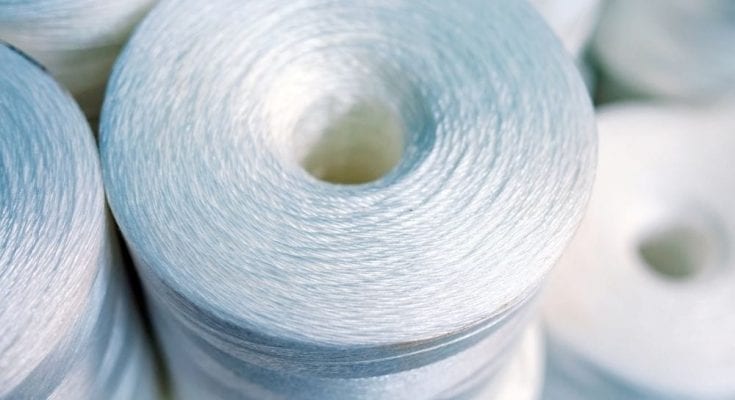It’s not often that we celebrate a synthetic fiber as a national hero, but nylon deserves its own holiday. More than 80 years ago, DuPont happened upon a combination of coal, water, and oxygen that was so versatile it would go on to revolutionize entire industries. You might be surprised by all the ways nylon changed history, but after reading this list, you’ll never take your windbreaker for granted again.
It Won World War II
Maybe that’s overstating things, but nylon gets a lot of credit for replacing silk just when we needed it most. In the 30s, the United States was getting most of its silk from Japan. This was no longer tenable during the war. So, nylon—which was mainly being used for ladies’ pantyhose at the time—was repurposed for the war effort. Nylon made more parachutes, ropes, fuel tanks, flak jackets, tents, netting, and shoelaces for our soldiers. As a result, the troops were much more well-equipped to withstand various weather conditions and could hold out a bit longer for victory.
It Landed on the Moon
That American flag that was planted on the moon on July 20, 1969? You guessed it—nylon. In 2012, photos from the moon’s surface confirmed that almost all the American flags from various missions were still standing—except for the one from Apollo 11 that was knocked over during liftoff.
It Improved Medical Equipment
The unique properties of nylon make it effective in ways that go beyond fibers. In its solid form, nylon is extremely chemical-resistant and retains its properties even after sterilization. That makes it a natural choice for medical appliances. Today, nylon is used for catheters, bandages, syringes, walkers, and even hospital beds.
It Changed the Auto Industry
Nylon can make car parts that are stronger, lighter, cheaper, and more durable. So, more automakers are switching from metal to this plastic, and the auto industry comprises an increasingly significant chunk of the nylon market. More fuel-efficient cars require lighter materials, and nylon is invaluable for safety features such as seatbelts, airbags, and child restraints.
It Made Cooking Easier
Nylon has a high melting point and can maintain its flexibility even at high temperatures. You can find it in spatulas, tongs, brushes, forks, and spoons. Big names such as OXO and Calphalon use nylon because it doesn’t damage non-stick surfaces. Nylon is also easy to dye, so we can coordinate our kitchens with utensils and equipment in different colors.
It Gave Us Athleticwear
There are endless ways that nylon has changed history and touched everyday life. It makes lingerie, toothbrushes, dog collars, fishing lines, and guitar strings, plus so much more. But the greatest boon to humanity? Athleticwear. The wonder fiber has a very particular set of skills—it wicks away sweat, is breathable, and is super-stretchy. That means it’s a gift of epic proportions to athletes everywhere, as well as couch potatoes who also enjoy comfort. When combined with Spandex, there’s no stopping nylon.
FAQ
What role did nylon play in World War 2?
Maybe that’s overstating things, but nylon gets a lot of credit for replacing silk just when we needed it most. In the 30s, the United States was getting most of its silk from Japan. This was no longer tenable during the war. So, nylon—which was mainly being used for ladies’ pantyhose at the time—was repurposed for the war effort. Nylon made more parachutes, ropes, fuel tanks, flak jackets, tents, netting, and shoelaces for our soldiers. As a result, the troops were much more well-equipped to withstand various weather conditions and could hold out a bit longer for victory.



